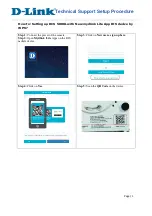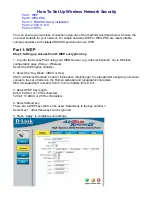
2-14
Cisco Aironet 1240AG Series Access Point Hardware Installation Guide
OL-8371-05
Chapter 2 Installing the Access Point
Mounting Access Point on a Desktop or Shelf
Step 3
Determine the location in the ceiling where you will mount the access point and remove an adjacent
ceiling tile.
Step 4
Orient the access point 2-GHz and 5-GHz antennas so that they are pointing down when mounted on the
T-bar Box hanger.
Step 5
Adjust the height of the T-bar box hanger to provide antenna clearance above the ceiling tile using the
height adjusting screws (refer to
Figure 2-5
).
Step 6
Attach the T-rail clips on each end of the T-bar box hanger to the ceiling grid T-rails. Make sure the clips
are securely attached to the T-rails.
Step 7
Connect a drop wire to a building structural element and through the hole provided in the bracket
mounting clip. This additional support is required in order to comply with the U.S. National Electrical
Safety Code.
Step 8
To attach the access point to the mounting plate, see the
“Attaching the Access Point to the Mounting
Plate” section on page 2-16
.
Step 9
If you need additional security, see the
“Securing the Access Point” section on page 2-17
for additional
information.
Step 10
Verify the access point is operating before replacing the ceiling tile (see the
“Powering Up the Access
Point” section on page 2-22
).
Mounting Access Point on a Desktop or Shelf
When placing the access point on a desktop of shelf, the use of the mounting plate is optional. The
mounting plate can be used to shield the user from the hot bottom surface of the access point when
movement of the access point may be necessary. The access point is shipped with four rubber pads that
you can place on the bottom of the access point or the mounting plate to help prevent sliding or
scratching the surface of your desktop or shelf. For information on connecting the access point cables,
see the
“Connecting the Ethernet and Power Cables” section on page 2-20
.
Cable Security Bracket
The access point mounting plate has an attached cable security bracket that covers the console port,
Ethernet port, power port, and the mode button to prevent the installation or removal of the cables or the
activation of the mode button. If desired, the cable security bracket can be removed prior to attaching the
mounting plate to a ceiling or wall.
















































